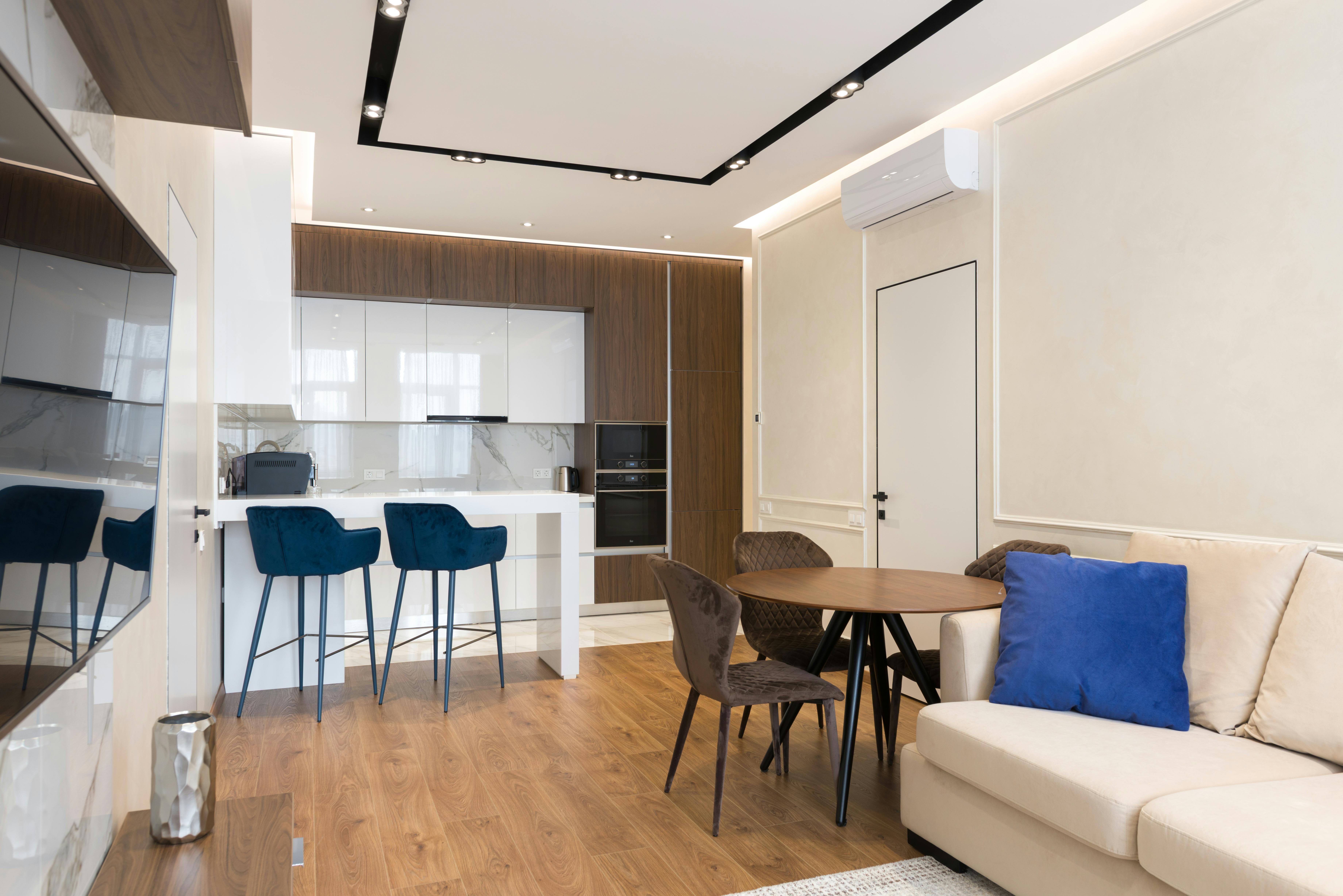Hardwood flooring adds timeless beauty and warmth to any home. Whether you're renovating or building from scratch, choosing the right type of hardwood is crucial. Two popular options are engineered hardwood and solid hardwood.
While they may appear similar at first glance, understanding their differences is essential to make an informed decision for your home.
What are the differences between engineered hardwood and solid hardwood?
Construction
Solid hardwood is made from a single piece of wood cut from a tree. It's typically 3/4 inch thick and can be sanded and refinished multiple times over its lifespan. On the other hand, engineered hardwood consists of several layers of wood stacked and glued together in a cross-grain configuration. The top layer is a thin veneer of real hardwood, while the underlying layers are made of plywood or high-density fiberboard (HDF). This construction makes engineered hardwood more dimensionally stable than solid hardwood, reducing the risk of warping or cupping due to moisture fluctuations.
Installation
Solid hardwood is usually nailed or stapled down to a plywood subfloor, which requires professional installation and can be time-consuming. It's not recommended for installation below grade or in areas with high humidity, such as basements or bathrooms, as it's prone to expansion and contraction. Engineered hardwood, on the other hand, offers more versatility in installation. It can be glued down, stapled, or floated over various subfloors, including concrete and radiant heating systems. This makes engineered hardwood a preferred choice for basements and other moisture-prone areas.
Durability
Both engineered and solid hardwood floors can last for decades with proper care and maintenance. However, solid hardwood has the advantage of being able to be sanded and refinished multiple times, allowing it to withstand heavy wear and tear over the years. Engineered hardwood, while durable, typically has a thinner wear layer and may only withstand one or two refinishing treatments. That said, advances in manufacturing have led to engineered hardwood products with thicker wear layers, offering increased durability comparable to solid hardwood.
Appearance
One of the main advantages of solid hardwood is its authenticity and natural beauty. Since it's made from a single piece of wood, solid hardwood showcases unique grain patterns and color variations characteristic of each species. Engineered hardwood, although it features a real wood veneer on top, may not have the same depth of character as solid hardwood. However, engineered hardwood often comes in a wider range of species and finishes, allowing for more design flexibility to suit different aesthetic preferences and interior styles.
Making the right choice with Direct Custom Flooring
When it comes to choosing between engineered hardwood and solid hardwood, there's no one-size-fits-all answer. It ultimately depends on your specific needs, budget, and preferences. If you prioritize stability and versatility in installation, engineered hardwood may be the better option. On the other hand, if you value authenticity and longevity, solid hardwood could be the right choice for you. Whichever you choose, investing in quality flooring from a reputable supplier is key to ensuring durability and satisfaction with your decision.
Understanding the differences between engineered hardwood and solid hardwood is crucial in making an informed decision for your home. Whether you prioritize stability, durability, or authenticity, both options offer unique benefits that can enhance the beauty and value of your space. If you're considering hardwood flooring for your home, visit Direct Custom Flooring in Tavares, FL. Our team of experts can help you explore our wide selection of flooring options and find the perfect fit for your needs. Contact us today to schedule a consultation.








